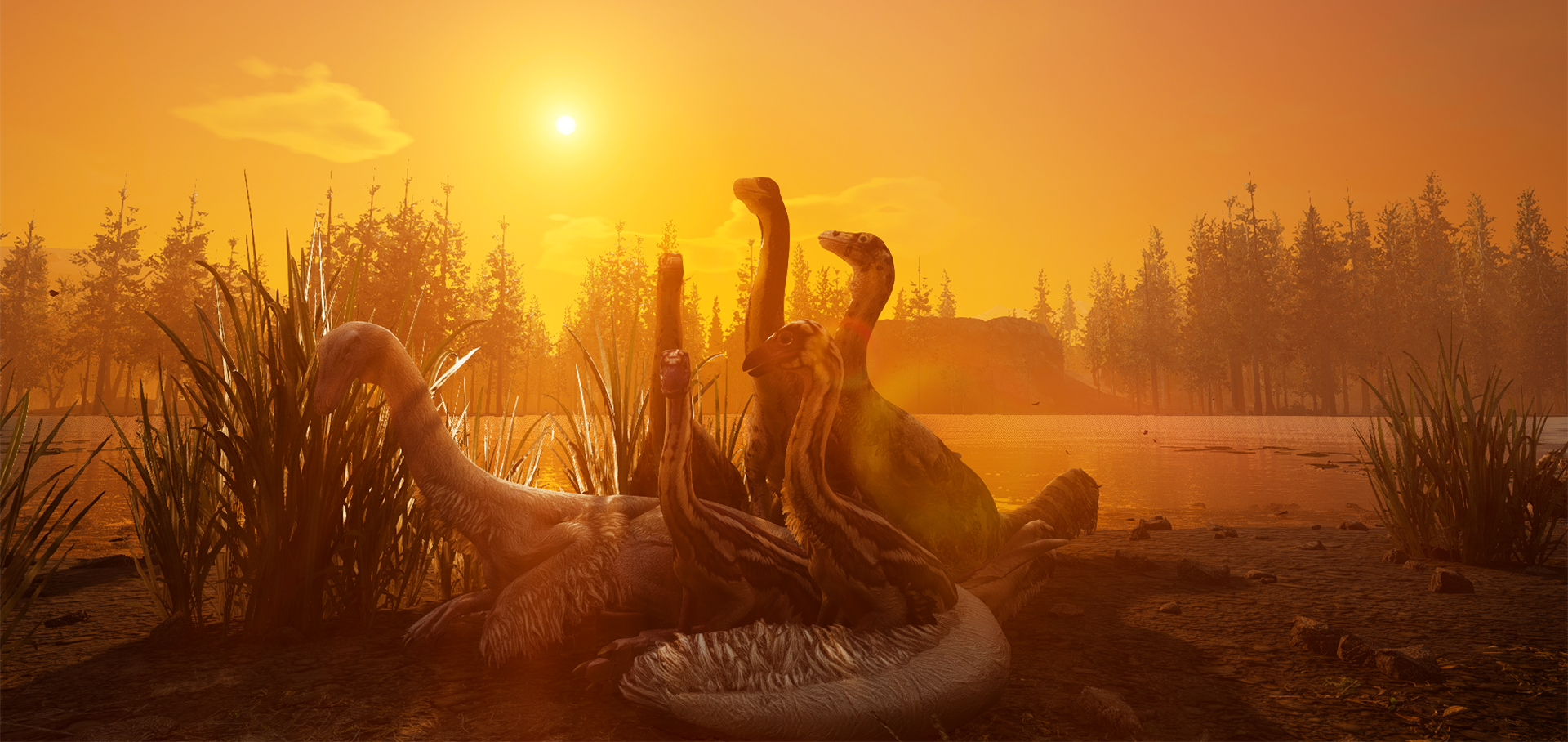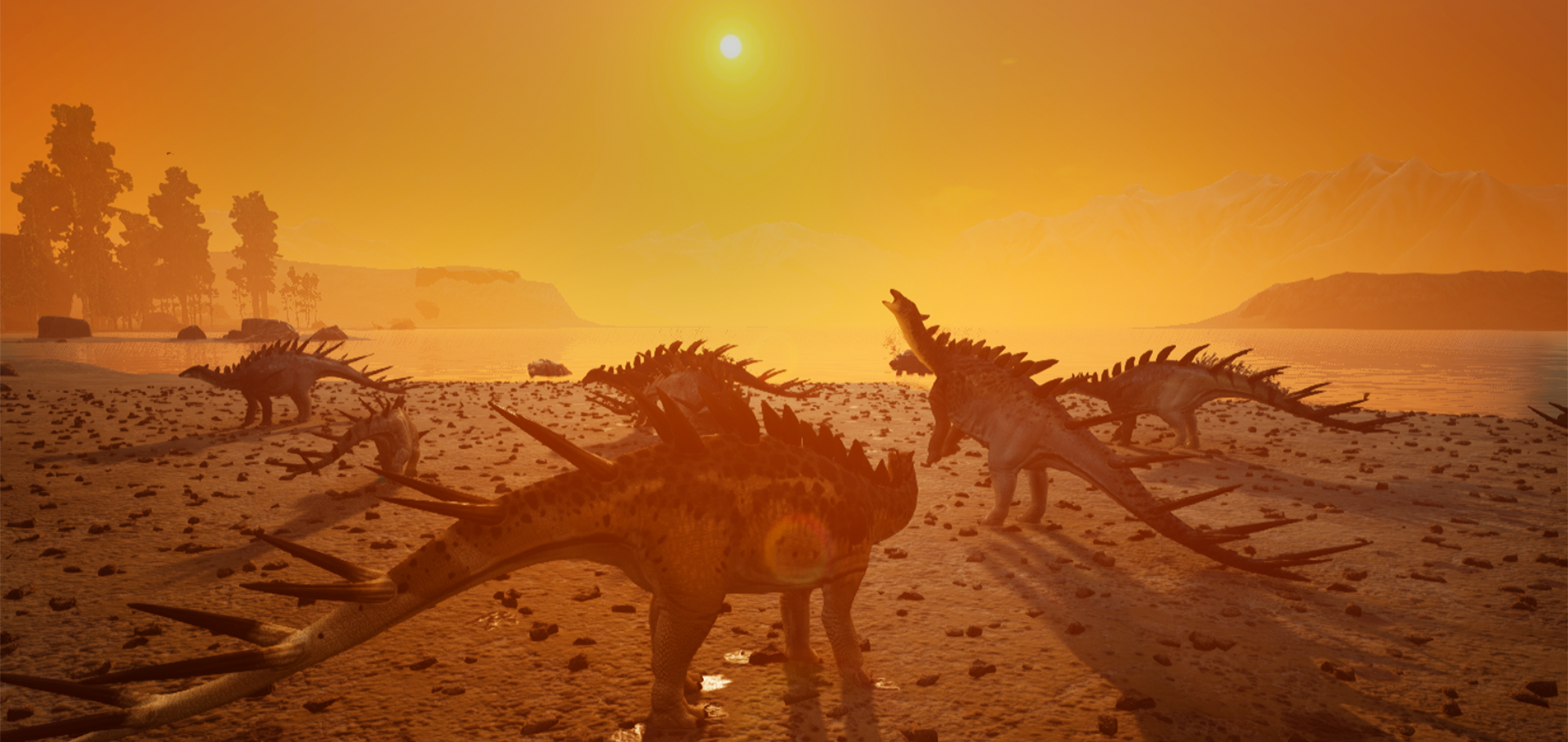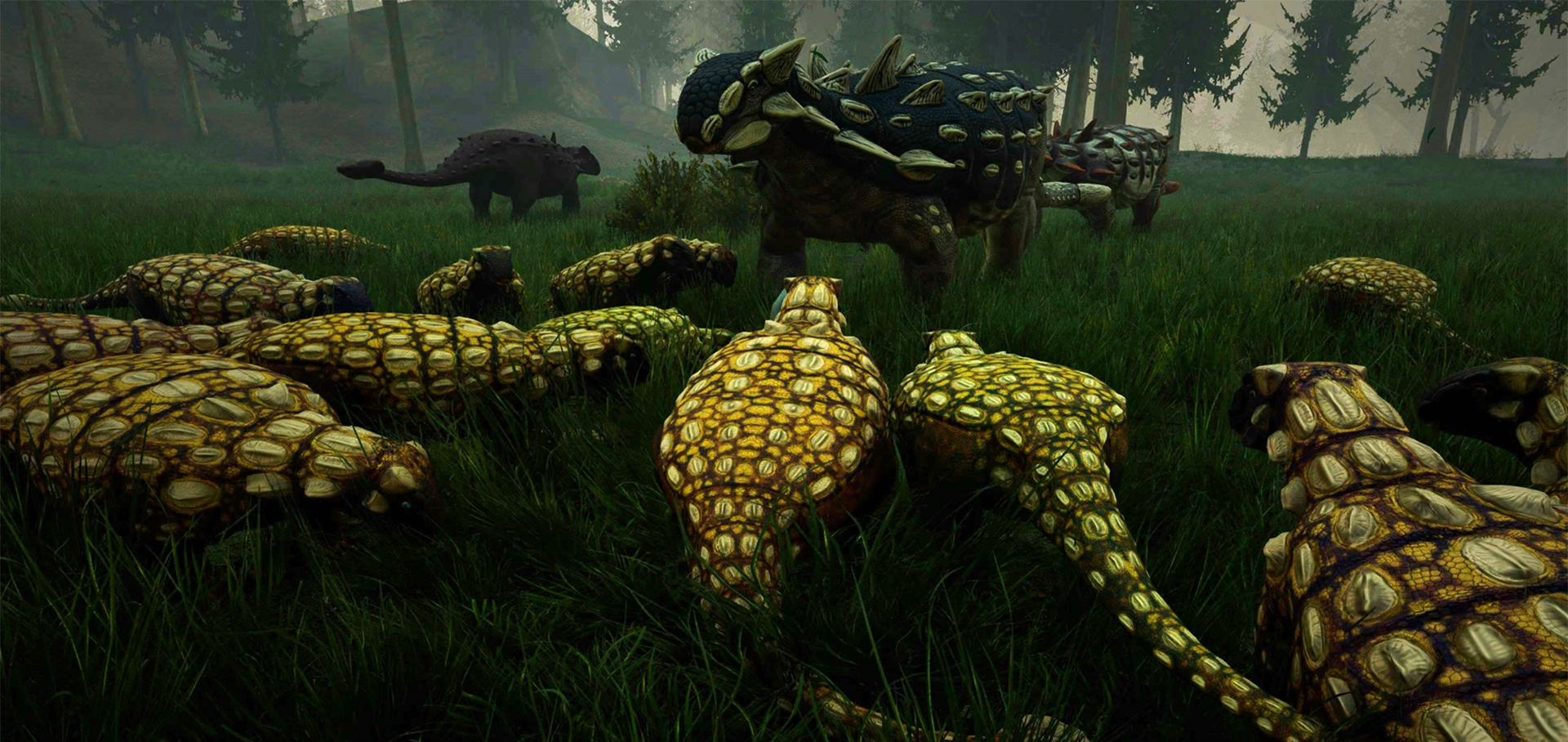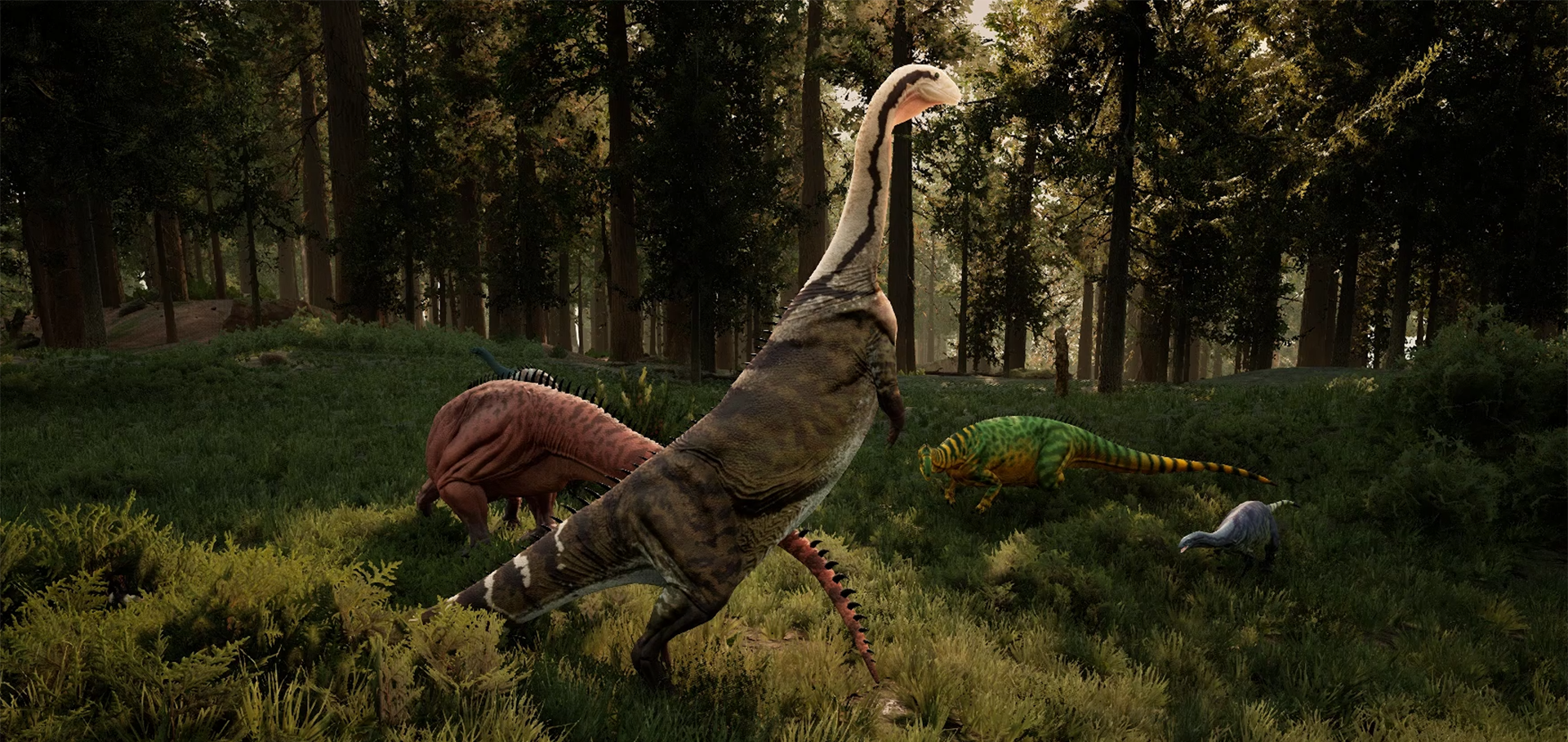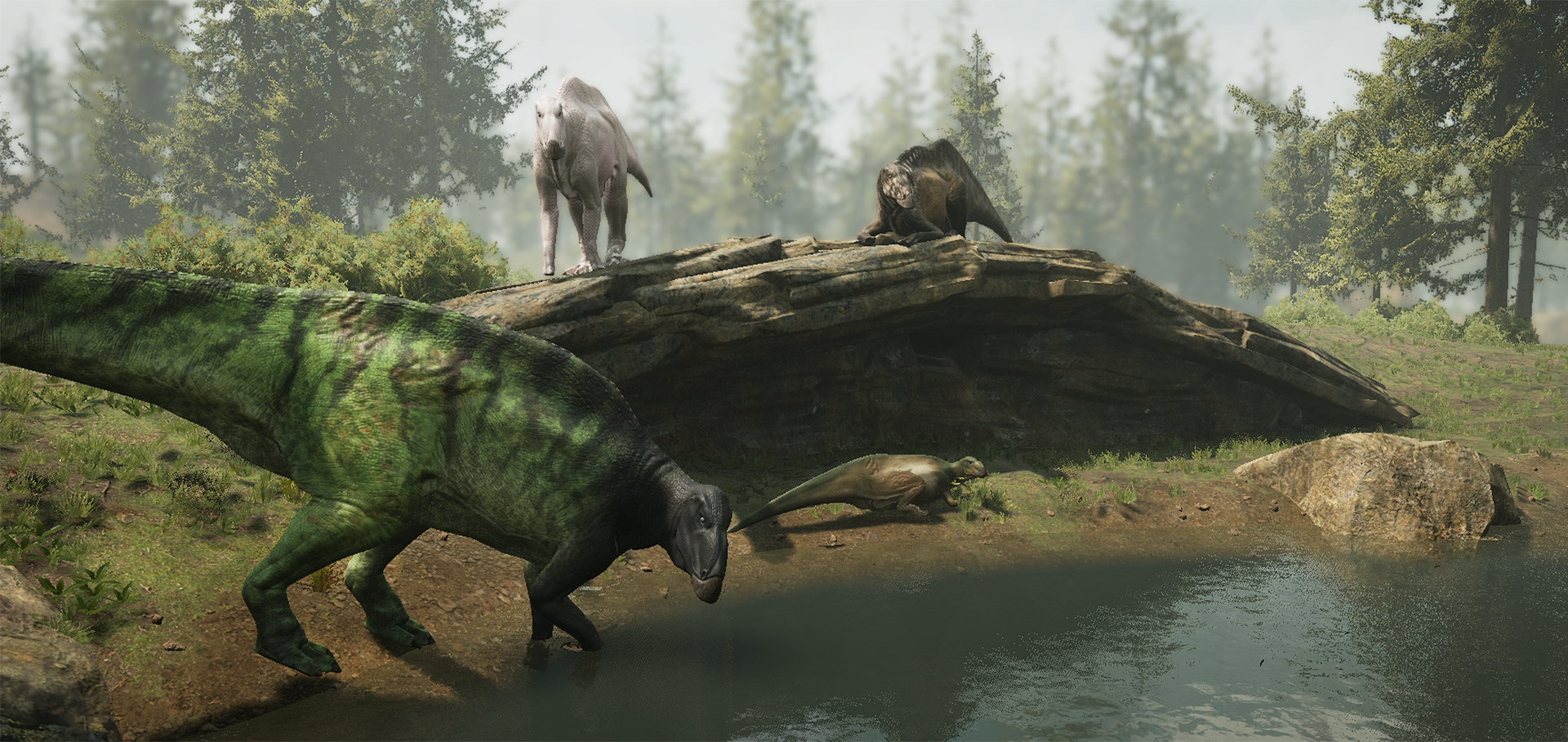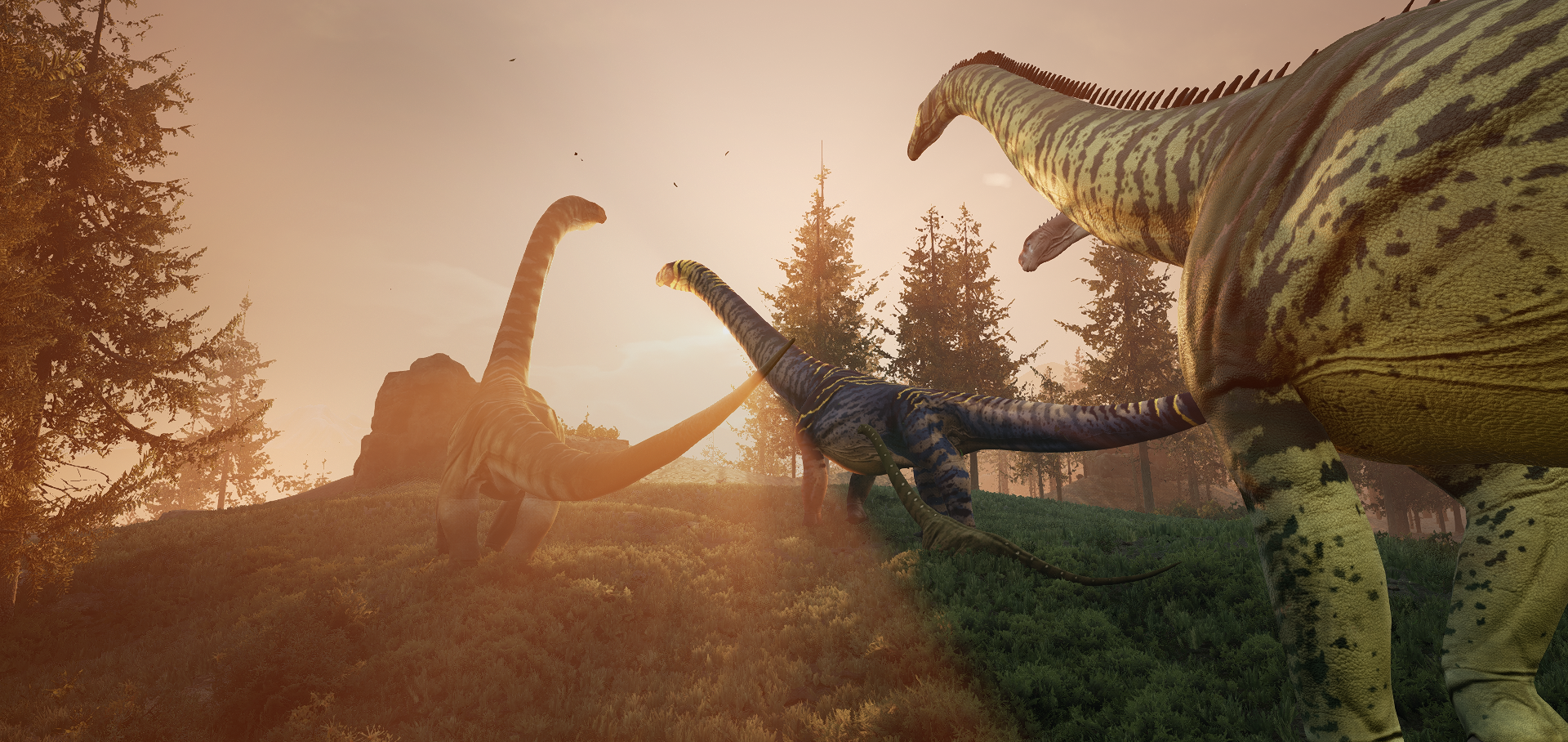
Behaviors are written for flavor and for those that would like to portray the more realism side of the server. There is no need to report someone for not acting within their profile's behavior. Please only do so if they do not follow what it mandatory, or do not follow what is found in the rules.
Last Update: May 8th, ‘23
Tier 1: 1 hour from juvenile to adult, extra 10 mins from hatchling
Tier 2: 3 hours from juvenile to adult, extra 30 mins from hatchling
Tier 3: 4.5 hours from juvenile to adult, extra 30 mins from hatchling
Tier 4: 5.5 hours from juvenile to adult, extra 30 mins from hatchling
Tier 5: 6 hours from juvenile to adult, extra 30 mins from hatchling
Image by: Crayvey
Camptosaurus
Herd Size| Unlimited
• Being relatively fragile, these herbivores prefer to stick around larger herbivores to use as meat-shields.
• Often loud and bold, even known to nip at larger creatures before fleeing for their life.
• Loves to collect things, often making stashes of completely arbitrary items.
Image by: BranBran
Struthiomimus
Herd Size| Unlimited
• Often act as sentries for herds, distress calling to alert them of any danger.
• Playful with other herbivores, mock-kicking (without actually making contact), jumping around, squawking, etc.
• Seems restless and skittish, always on the move.
• Known to give a kick or peck to adult tier 2+ dinosaurs at their own risk, then quickly fleeing the scene.

Image by: Warrior
Albertaceratops
Herd Size| 8 Adults/Subs + Unlimited hatchlings/juveniles/adolescents
• Bull albertaceratops go to great lengths to impress females, often bringing them gifts to woo them over.
• Bull-fights to further impress females are not uncommon, however, these brawls rarely ever result in death, usually ending in submission instead.
• Tend to be very social, often mingling with other species of herbivore.
Image by: Amaroq
Amargasaurus
Herd Size| 8 Adults/Subs + Unlimited hatchlings/juveniles/adolescents
• Long, whip-like tails are often used as a dangerous weapon, or a method of communication between Amargasaurus.
• Usually known to be nomadic, traveling long distances and enjoying new territory.
• Some Amargasaurus have developed spiked sails, giving them extra protection against predators.
Image by: Korgi
Kentrosaurus
Herd Size| 8 Adults/Subs + Unlimited hatchlings/juveniles/adolescents
• Herds are formed with close bonds, and herd mates are often aggressively protective over each other.
• Incredibly playful with each other and other herbivores, often running around, jumping, calling, etc.
• Generally skittish in nature, but will defend themselves and their herd to the death.
Image by: Amaroq
Lambeosaurus
Herd Size| 8 Adult/Subs + Unlimited hatchlings/juveniles/adolescents
• Incredible social herbivores, and are often seen bonding and socializing with not only each other, but also other herbivores.
• Not the brightest creatures, some male lambeosaurus are known to mistake female iguanodon as potential mates, and attempt to woo them to no avail.
• Often incredibly loud, loving to boast and broadcast at any hour.
Image by:
Pachycephalosaurus
Pack Size| 5 Adults/Subs + Unlimited hatchlings/juveniles/adolescents
• Known to live in large herds, and usually do not follow any single leader within the herd.
• During mating season, male Pachy try to establish a dominance hierachy by headbutting each other at full speed until one side yields.
• Females within the herd seem to have a hierarchy that relates to age.
• Known to be omnivorous, mostly when alone or in herds with other Pachycephalosaurus .
MANDATORY: When a Pachy is alone, or in an all Pachy herd, they must follow Body Down rules and can;
• Challenge any carnivore for a body, though cannot third party as per Third Party rules.
• Hunt and third party any hunt.
Image by: Khanivore
Styracosaurus
Pack Size| 8 Adults/Subs + Unlimited hatchlings/juveniles/adolescents
• Fast and nimble, often using this to their advantage when hunted.
• They tend to be territorial around food, sometimes even towards their own herd mates if hungry enough.
• Herds are usually led by a dominant bull.
• Bull-fights between styracosaurus are not uncommon, however, these brawls rarely ever result in death, usually ending in submission instead.

Image by: I-pp-on-your-bricks
Anodontosaurus
Herd Size| 4 Adults/Subs + Unlimited hatchlings/juveniles/adolescents
• A generally quiet herbivore, and prefers quiet as well. Has been known to leave other herbivores if they are too loud.
• A walking tank, their impenetrable armor takes this herbivore off the menu for most carnivores.
• Not the most intelligent herbivore, but their impressive physical attributes have allowed them to thrive.
Image by: Warrior
Iguanodon
Herd Size| 6 Adults/Subs + Unlimited hatchlings/juveniles/adolescents
• Extremely social, herds are often seen bonding and socializing with not only each other, but also other herbivores.
• Females all work together to communally raise young, and protect them fiercely.
• Utilizes it’s incredible sharp thumb to maim and stab threats.
Image by: Amaroq
Stegosaurus
Herd Size| 6 Adults/Subs + Unlimited hatchlings/juveniles/adolescents
• Known for being belligerent bullies, often guarding food and water within their personal space.
• Herds are usually nomadic, and seem to prefer open plains to dense forests.
• Usually avoided by other herbivores due to their aggressive nature.
Image by: AlphaCupCakes
Therizinosaurus
Herd Size| 4 Adults/Subs + Unlimited hatchlings/juveniles/adolescents
• Confident and bold, the theri will not hesitate to defend itself or its herd from any distance with their loud calls that can be heard from a great distance.
• Picky when it comes to choosing a mate, and will pick based on claw size or their potential suitor.
• While they are tolerant of and will pack with any herbivore, they are known to be into themselves, and particularly for bullying deinocheirus solely because of their difference in claw size compared to the theri.
Image by: Warrior
Yunannosaurus
Herd Size| 6 Adults/Subs + Unlimited hatchlings/juveniles/adolescents
• Surprisingly nimble for their size, and have been observed commonly body slamming attackers.
• Commonly seen using their long, strong tails as weapons.
• Herds are usually nomadic, and seem to prefer living in forests or areas with dense vegetation
• Seems to enjoy being surrounded by different types of herbivores.

Image by: Nexronis
Barsboldia
Herd Size| 4 Adults/Subs + Unlimited hatchlings/juveniles/adolescents
• Females tend to work together to raise their young as a community.
• Known to remain in an area for long periods of time, grazing for long periods of time.
• Utilizes their thick and powerful tails to ward off predators.
MANDATORY: Does not get along with Deinocheirus, Parasaurolophus or Eotriceratops, and will either kick them out of the herd, or leave the herd themselves. These challenges follow the herbivore challenge rules.
Image by: BranBran
Deinocheirus
Herd Size| 4 Adults/Subs + Unlimited hatchlings/juveniles/adolescents
• Generally lazy, deinocheirus love to lay around on the shore and soak up the sunshine.
• Nomadic in nature, deinocheirus loves to roam from lake to lake.
• Female deinocheirus are incredibly caring and attentive mothers, whereas males are not too bothered about spending time with their young.
MANDATORY: Does not get along with Eotriceratops, Parasaurolophus or Barsboldia and will either kick them out of the herd, or leave the herd themselves. These challenges follow the herbivore challenge rules.
Image by: Crayvey
Eotriceratops
Herd Size| 4 Adults/Subs + Unlimited hatchlings/juveniles/adolescents
• Giant, powerful, and slow-moving, preferring to stay in an area rather than migrating around.
• Herds are usually led by a dominant bull, who reserves mating rights.
• Bull-fighting for breeding rights is not uncommon among eotriceratops, but rarely do these brawls ever result in death, usually ending in submission instead.
MANDATORY: Does not get along with Deinocheirus, Parasaurolophus or Barsboldia and will either kick them out of the herd, or leave the herd themselves. These challenges follow the herbivore challenge rules.
Parasaurolophus
Herd Size| 4 Adults/Subs + Unlimited hatchlings/juveniles/adolescents
• Can be very curious in nature and easily startled especially when alone.
• Known to be grazing in open locations for long periods of time.
• Herds of Para are able to identify each other by their head crest which can also be used to ward off carnivores.
MANDATORY: Does not get along with Deinocheirus, Eotriceratops or Barsboldia and will either kick them out of the herd, or leave the herd themselves. These challenges follow the herbivore challenge rules.

Image by: DatBoiSpino
Argentinosaurus
Herd Size| 4 Adults/Subs + Unlimited hatchlings/juveniles/adolescents.


